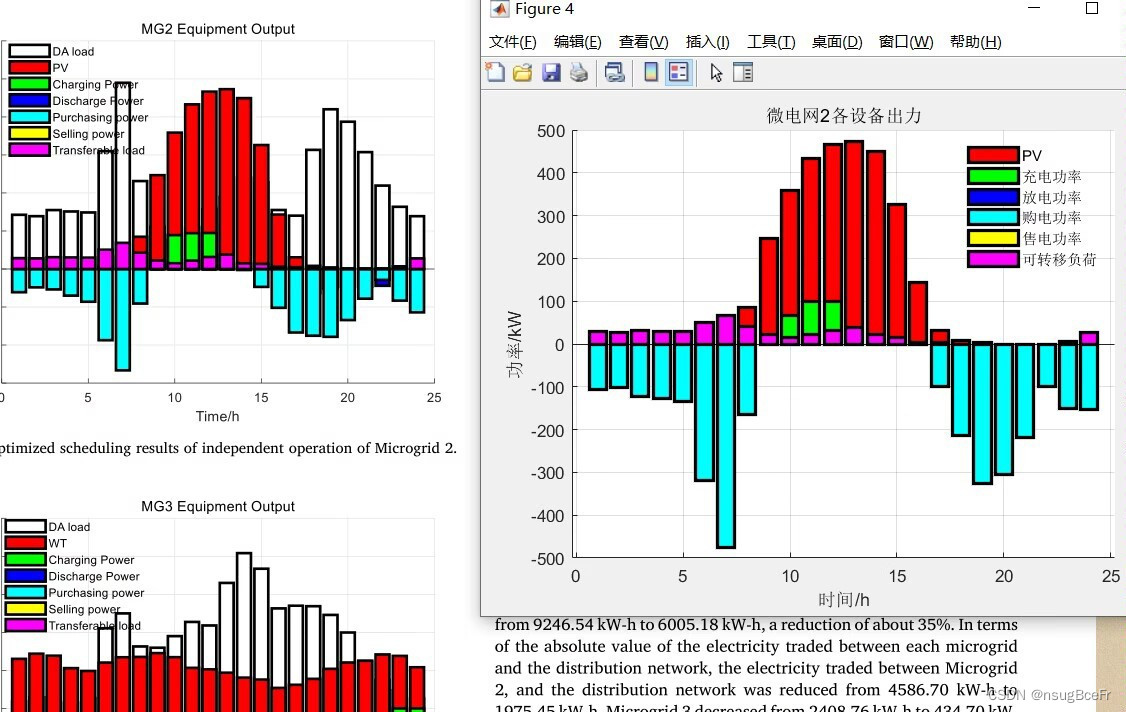基于合作博弈模型的多微网间日前交易研究
Highlights:
1)在日前电力批发市场内建立多个微电网之间的合作联盟。
2)通过微电网之间的合作博弈,实现区域可再生能源的灵活消费。
3)降低整体运营成本,帮助微电网获得令人满意的交易能力和电价。
4)完善多微电网合作体系,推动可再生能源利用市场化。
主题:微电网是电力市场中最常见的分布式能源参与形式之一。
构建了多个微电网之间的合作博弈模型。
纳什讨价还价用于协调微电网之间的利益分配,以及分析微电网之间的最优交易力和电价。
研究证明,微电网之间的合作博弈可以实现区域内可再生能源的灵活消费。
微电网的运营成本也较低。
纳什讨价还价帮助联盟成员获得令人满意的贸易权和关税。
此外,有效地提高了微电网系统的整体运行效率和市场竞争力。








基于合作博弈模型的多微网间日前交易研究
摘要:
随着可再生能源的快速发展和普及,微电网作为电力市场中最常见的分布式能源参与形式之一,越来越受到广大电力用户的关注。为了实现区域可再生能源的灵活消费和降低整体运营成本,本文构建了多个微电网之间的合作博弈模型,并采用纳什讨价还价方法协调微电网之间的利益分配。研究结果表明,合作博弈模型可以帮助微电网获得令人满意的交易能力和电价,推动可再生能源利用市场化,提高微电网系统的整体运行效率和市场竞争力。
1. 引言
随着可再生能源技术的迅猛发展,越来越多的微电网出现在电力市场中。微电网作为一种分布式能源参与形式,可以有效利用区域内的可再生能源资源,为用户提供更加可靠和环保的电力供应。然而,微电网间的能源交易和利益分配问题一直是制约微电网发展的关键因素之一。为了解决这一问题,本文基于合作博弈模型,对多个微电网间的日前交易进行研究,旨在实现区域可再生能源的灵活消费和降低整体运营成本。
2. 多微电网间的合作博弈模型
2.1. 合作博弈理论概述
合作博弈是一种通过合作和协商来获取最大收益的博弈模型。在多个微电网间的合作博弈中,每个微电网可以选择合作或者不合作。合作的微电网可以共享可再生能源资源和负荷,实现灵活的能源调配,而不合作的微电网则只能自主消费和供电。
2.2. 纳什讨价还价在微电网中的应用
纳什讨价还价是一种常用的协商算法,可以用于协调微电网间的利益分配。每个微电网根据自身的需求和利益,通过讨价还价过程确定最终的交易力和电价。纳什讨价还价可以确保每个微电网都能获得令人满意的贸易权和关税。
3. 研究结果与分析
通过建立多个微电网间的合作博弈模型,并采用纳什讨价还价方法进行协商和交易,我们研究了微电网之间的最优交易力和电价。研究结果表明,合作博弈模型可以实现区域内可再生能源的灵活消费,提高微电网系统的整体运行效率和市场竞争力。此外,合作博弈模型还可以降低微电网的运营成本,帮助微电网获得更高的交易能力和电价。
4. 结论
本文基于合作博弈模型,研究了多个微电网间的日前交易问题。通过纳什讨价还价方法协调微电网之间的利益分配,实现了区域可再生能源的灵活消费和降低整体运营成本。研究结果表明,合作博弈模型可以推动可再生能源利用市场化,提高微电网系统的整体运行效率和市场竞争力。未来,我们将进一步研究微电网间的合作博弈问题,并探索更多有效的协商算法和交易机制,以促进微电网的发展和可持续能源利用。
关键词:微电网、合作博弈、纳什讨价还价、可再生能源、交易能力、电价、运营成本、市场化、系统效率、市场竞争力
相关代码,程序地址:http://imgcs.cn/lanzoun/692707500602.html







 本文研究了微电网间合作博弈模型如何实现可再生能源灵活消费、降低运营成本,通过纳什讨价还价协调利益,提升交易能力和电价,从而推动可再生能源市场化并增强微电网系统效率和竞争力。
本文研究了微电网间合作博弈模型如何实现可再生能源灵活消费、降低运营成本,通过纳什讨价还价协调利益,提升交易能力和电价,从而推动可再生能源市场化并增强微电网系统效率和竞争力。

















 394
394

 被折叠的 条评论
为什么被折叠?
被折叠的 条评论
为什么被折叠?








